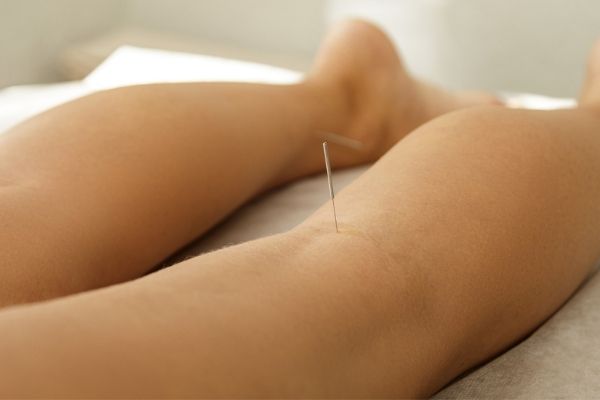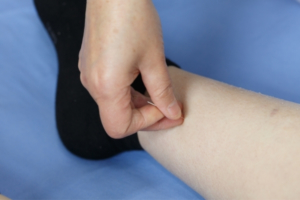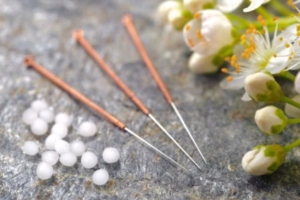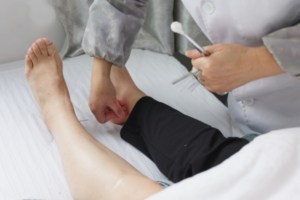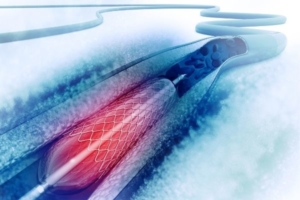If you’re experiencing leg pain, open sores, difficulty walking or climbing stairs, it’s only natural to seek out a “quick” treatment that doesn’t involve surgery. People with peripheral artery disease (PAD) may show no symptoms or they may be living with daily struggles that make mobility almost impossible. If you’re in the latter category, the last thing on your mind after enduring chronic pain is a long, arduous recovery. That’s where many people look to homeopathic medicine for peripheral artery disease like acupuncture.
However, it’s important to understand what causes peripheral artery disease to develop and why natural remedies for claudication could actually make the condition worse.
What Is Acupuncture Typically Used to Treat?
Acupuncture utilizes tiny, sterile needles inserted into the skin at different points in your body. They can be inserted all across the body to promote self-healing. According to Johns Hopkins University, these acupuncture points are believed to stimulate the central nervous system in order to release bodily chemicals into the brain, muscles, and spinal cord.
Acupuncture is considered to be homeopathic medicine that doesn’t always work for everyone. However, the National Institute of Health states that acupuncture can be used in conjunction with other treatments to help relieve: nausea, headaches, menstrual cramps, osteoarthritis, carpal tunnel syndrome, stroke rehabilitation, and asthma.
Although some of these homeopathic methods can help stimulate the body’s ability to self-heal, acupuncture for peripheral artery disease still remains a controversy. This is because scientists who study the body’s reaction to acupuncture are still baffled by its workings. In turn, people have extremely different experiences with acupuncture – while someone may be completely healed from chronic migraines, another person may still suffer even after many treatments.
What Does Homeopathic Medicine for Peripheral Artery Disease Mean?
Homeopathic medicine for peripheral artery disease embodies the use of natural remedies for claudication before resorting to surgery, acupuncture being only one option. Some acupuncturists believe that it can be used to promote blood flow and reduce inflammation. This is one of the reasons people may think homeopathic medicine for peripheral artery disease may be a good treatment choice.
It’s important to understand why peripheral artery disease develops in the first place before you choose a treatment plan.
If It Can Increase Blood Flow, Why Doesn’t Acupuncture for Blocked Arteries Work?
Just because you increase blood flow, doesn’t mean you are reducing the plaque buildup within the arterial walls. Although reducing inflammation could help reduce painful symptoms, acupuncture doesn’t treat the root cause of peripheral artery disease which is the accumulation of plaque.
Without reducing the root issue or getting rid of the plaque within the arteries, they will remain clogged leading to harmful consequences.
Why Acupuncture for Leg Pain May Not Fix Peripheral Artery Disease?
Peripheral artery disease (PAD) is a serious condition that can become life-threatening if not treated in a timely manner. This is one of the reasons why relying on homeopathic medicine for peripheral artery disease may not be a good idea. Depending on the stage you are currently in, PAD can lead to a heart attack, stroke, or amputation. Even though blocked arteries can take years to become fully clogged, delaying treatment could mean life or death. In addition, diagnosing and treating PAD before it becomes worse can increase mobility, allowing you to live a healthier, more productive life.
Acupuncture for leg pain is a slow treatment that can take many sessions before you can expect to see any results – if there are any. If you’re interested in avoiding surgery for peripheral artery disease and want an alternative, less-invasive procedure, you don’t have to resort to homeopathic medicine for peripheral artery disease either.
Do Doctors Try Natural Remedies for Claudication Before Medical Treatment?
Yes, of course they do! When you come in for a consultation to a treatment center like USA Vascular Centers, they will discuss the different medications and treatment strategies you have already considered or tried. One of the most common natural remedies for claudication your vascular specialist will recommend is a lifestyle change like diet or exercise.
A balanced diet or increased physical activity can help lower blood pressure and cholesterol, as well as help slow the progression of plaque buildup. These are two, often successful, natural remedies for claudication that will be recommended by your doctor before pursuing medical treatment.
However, if your plaque buildup is too severe, homeopathic medicine for peripheral artery disease, as well as natural remedies for claudication may not be viable options. When this occurs, the specialist may recommend a non-surgical, outpatient treatment like stent angioplasty.
How to Effectively Treat Peripheral Artery Disease Without Surgery
At USA Vascular Centers, we understand that avoiding surgery is a top priority for anyone who is suffering from PAD. That’s why we offer a nonsurgical, outpatient treatment known as stent angioplasty that can help open partially or fully blocked arteries. After a patient has tried to incorporate natural remedies for claudication such as a healthy diet, increased exercise, or prescribed medication, stent angioplasty can help them reclaim their independence.
Stent angioplasty works by implementing a tiny stent within a mesh balloon into the affected artery. The mesh is left in place to push plaque to the sides of the artery, creating a pathway for blood to flow freely. Once blood flow has been restored, the patient is able to continue healing in the comfort of their own home. Many patients after stent angioplasty have seen a significant change in their lifestyle: being able to lift their leg up to climb stairs, less fatigue when walking, and better sleep without chronic leg pain.
It’s important to be aware that there are effective, nonsurgical treatments out there that are more reliable than homeopathic medicine for peripheral artery disease. Stent angioplasty takes care of the condition fast, all while avoiding a hospital stay.
Want to learn more about outpatient stent angioplasty or schedule an initial consultation today? Call us at 888-773-2193 or click here to schedule online.
